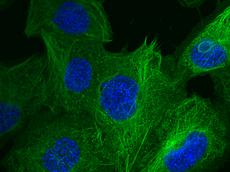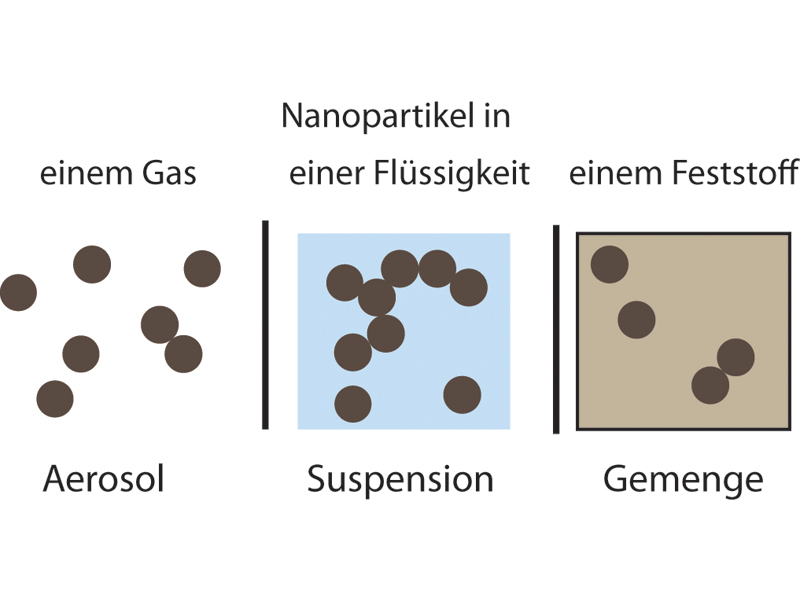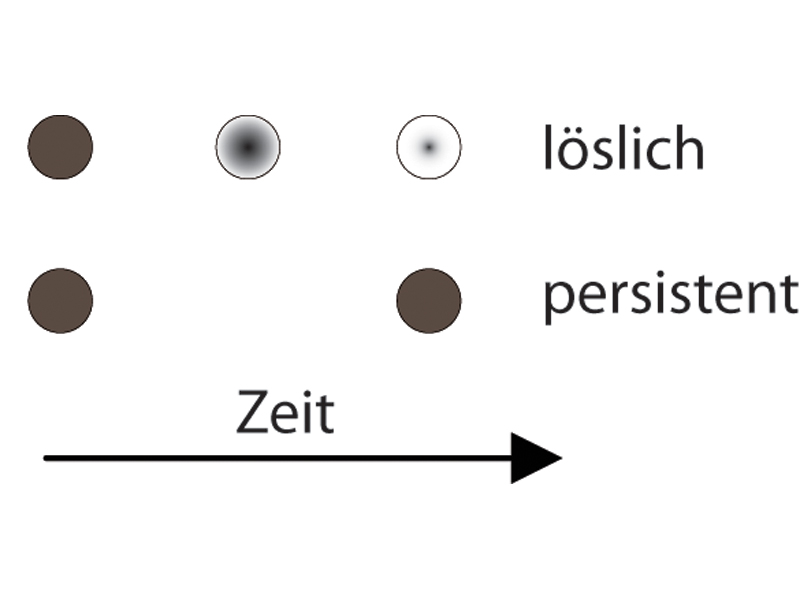Raising awareness instead of banning
Nanoparticles have caused a sensation in the past few months. The reason for this is that the properties of the materials, especially the way they act on the living body, are often unknown. In Switzerland, a precautionary matrix is now being realised to make the risks understandable.

Nano-materials are the promising dwarves of the future. Materials researchers and scientists in the areas of electronics or optics are currently betting on these particles, which are a billionth of a meter in size. However, they are also very important in medicine and biology, e.g. as a medium to transport medicines in the body or for disinfection (see the ETH Life article of 28.07.2008). The advantage of nano-materials is that they possess properties different to those of the same material in “normal” size. This is because nanoparticles have a very large surface area compared to their mass, and they also have a small number of atoms and molecules. This gives rise to quantum effects that lead to altered material properties. For example, a non-deformable ceramic becomes flexible when it is manufactured from nano-materials.
Fear as the driving force
However, the newly-emerging technology also harbours potential risks. In fact is that, up to now, there is still very little known about the way synthetic nanoparticles act on living organisms over a prolonged period of time. Only a very few test systems are available for this purpose (see ETH Life of 24.03.09), and, as a result, the scientific and technological bases needed to assess the risks are largely non-existent. This is why there is a great fear that, due to ignorance about certain products, in a few decades, we will be confronted with the same problems that arose in the past with, for example, asbestos or CFCs. Their effects were not recognized until decades later: the improper handling of asbestos caused asbestosis and mesothelioma, and the accumulation of CFCs in the stratosphere led to the ozone hole.
In October last year, the Federal Environment Agency (UBA) in Germany issued a press release and an information leaflet calling for the use of nanoparticles whose mode of action on humans and the environment was unknown to be avoided as far as possible. The media seized on this as a warning against nanotechnology. This response from the media triggered a storm of indignation among researchers in the nanotechnology field. In the opinion of Ludwig Limbach, CEO of the Micro- and Nano-science Platform of ETH Zurich, the press release and reporting is indiscriminate and is pure propaganda: “Anyone who warns against nanotechnology in its entirety would also have to denounce the whole of physics because they fear the atomic bomb.”
Precautionary matrix for self-monitoring
The fact that the subject is a live issue among researchers and politicians is evident in Switzerland as well: with the participation of the Federal Office of Public Health FOPH, the Federal Office for the Environment FOEN, and scientists in ETH Zurich, Eawag, Empa, Bern University, EPF Lausanne and other institutions, the Technology and Management Services (TEMAS) AG Company as project leader developed a precautionary matrix for synthetic nano-materials. Close collaboration has now produced the precautionary matrix, which classifies the substances based on their harmfulness and application. However, it does not provide a risk assessment, and is instead intended as an instrument for trade and industry with which they can comply with their duty of care and self-monitoring. This is why the raster not only covers particular substances but is also a guideline with which the industry can examine and classify their materials or products that contain nanoparticles.
Variable risk
The classification involves assessing the specific framework conditions, the potential for effect, human exposure and environmental pollution by nanoparticles. Christoph Studer of the BAG stresses that initially a check is made to establish whether the materials to be processed contain nano-materials at all, i.e. smaller than 500 nanometres. If this is confirmed, companies can use the matrix to assess the possible risks. If a company manufactures emulsion paints, for example, a check must be made in separate matrixes as to whether and what risks could occur for employees during the production operation, for painters when applying the paint and for people living in the painted rooms. Studer says “If possible risks and thus a need for precautionary action are discovered, it is necessary to check this more thoroughly and to take action if necessary.”
Limbach says that nano-materials, which are especially persistent as well as being catalytically active, must be handled with particular professionalism and care. “A distinction must be made when considering nanoparticles.” Although research has not yet completely revealed how nanoparticles enter the human body, it is nevertheless clear that the danger originating from a substance depends on its physical state. This is why the precautionary matrix considers nanoparticles in their respective application form.
Educating companies
It is important that people are informed openly about handling nano-materials – the FOPH also gives this high priority. Large companies have been trained in handling the matrix in a pilot project during the past few months. Studer says the feedback was entirely positive. The structured matrix enabled the companies to recognise where the biggest risks lie. Some even suggested possible solutions to manage the risks. The matrix is now available on the BAG’s web site at http://www.nanotechnologie.admin.ch.









READER COMMENTS